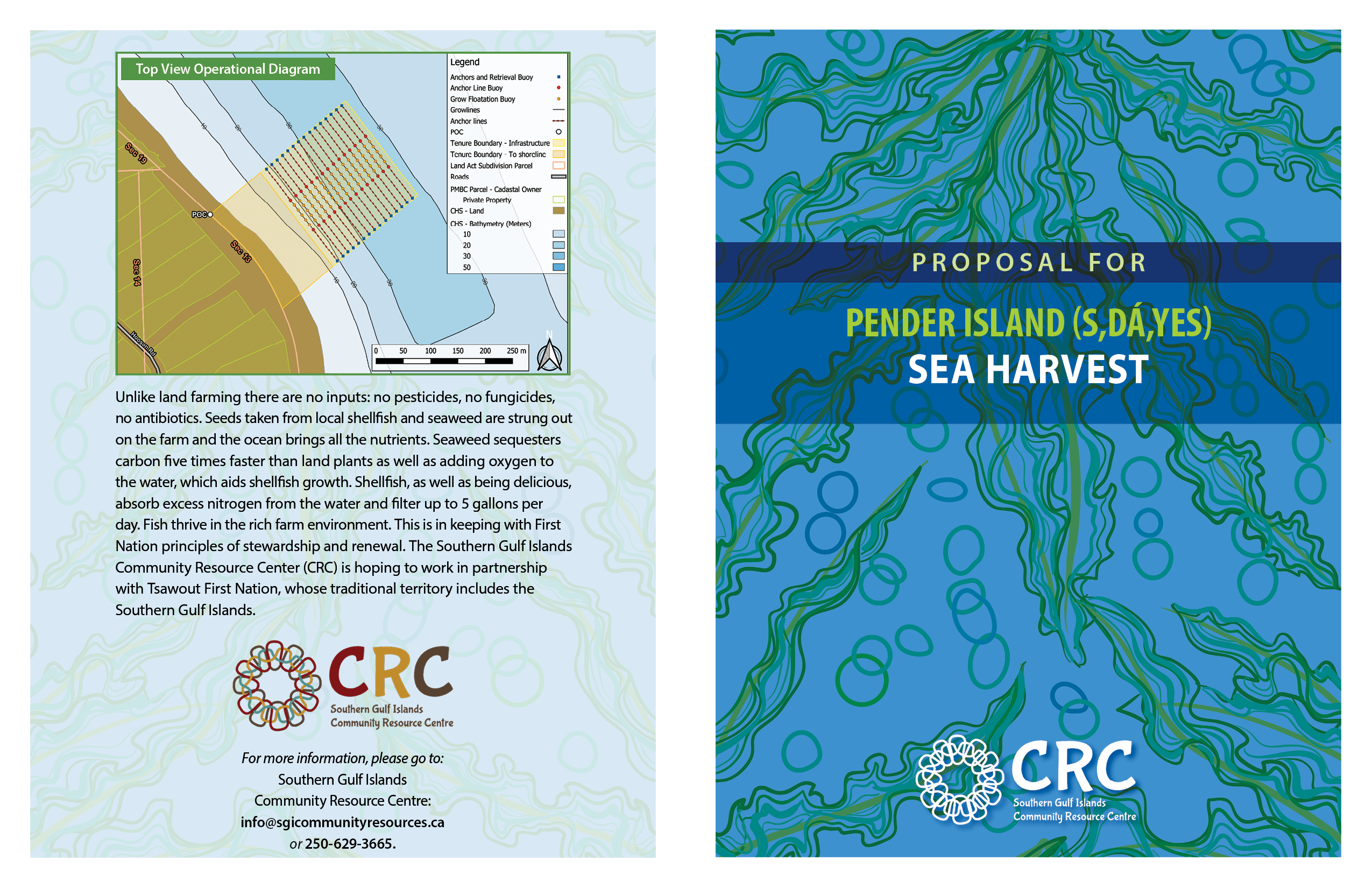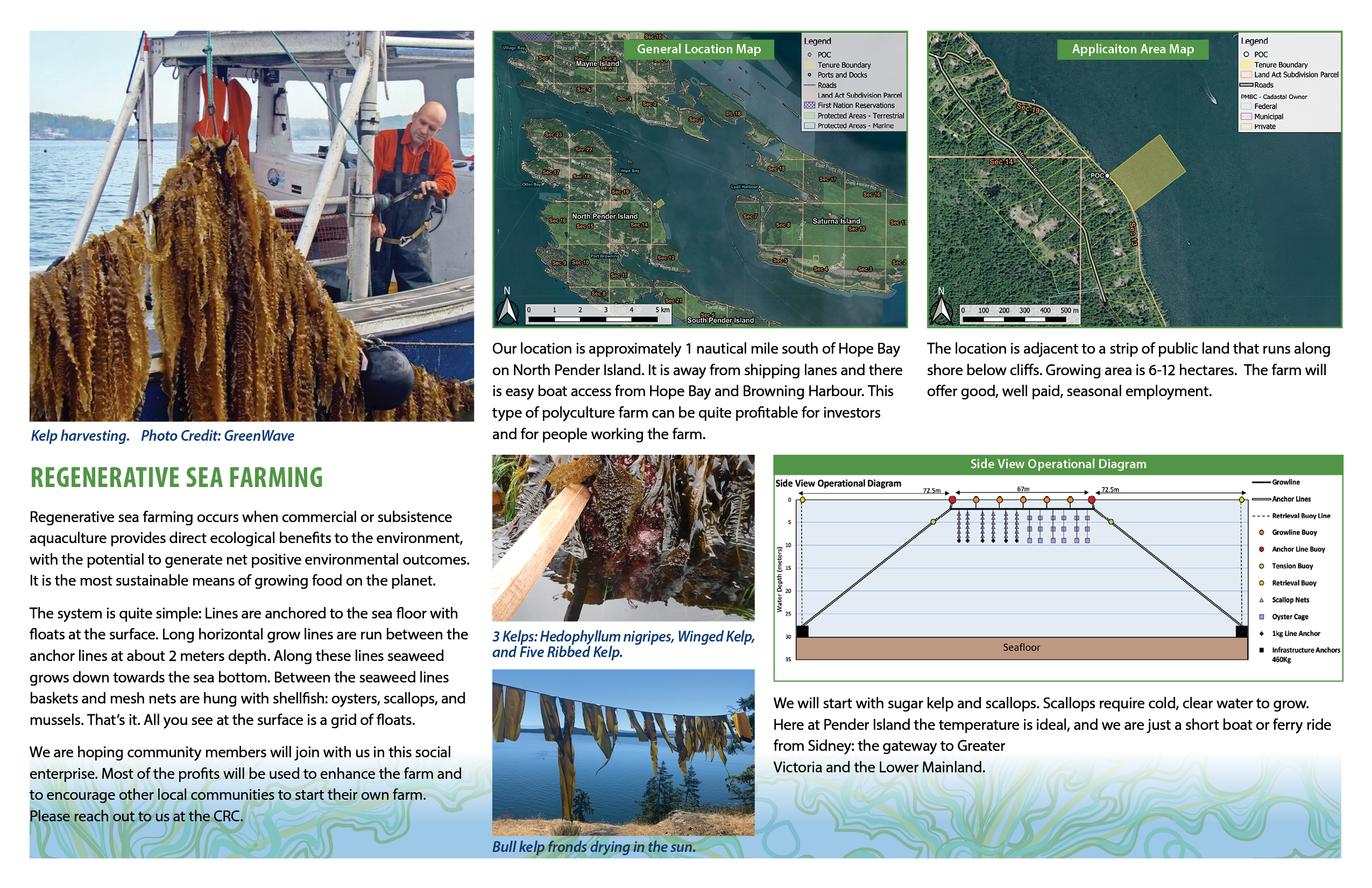Sea Harvest
What is Regenerative Sea Farming?
Regenerative sea farming occurs when commercial or subsistence aquaculture provides direct ecological benefits to the environment. It is the most sustainable means of growing food on the planet. To learn more visit the Southern Gulf Islands Community Resource Centre. You can also email us at info@sgicommunityresources.ca or call us at 250-629-3665.


